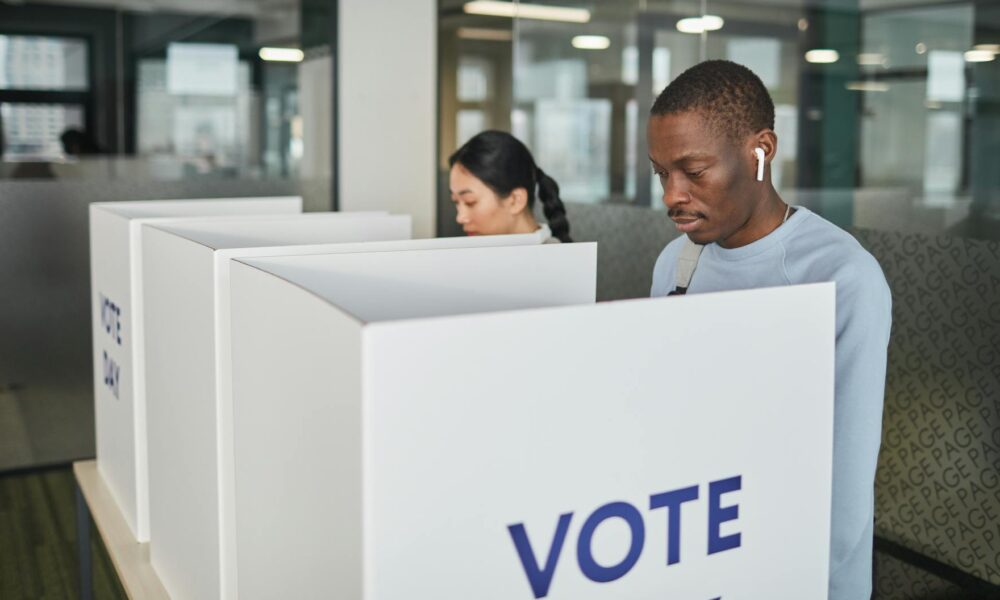Last month, the US Supreme Court ruled that Louisiana could use its new congressional map for the 2024 elections, ending—for now—an extended fight over how these districts are drawn. As a result, two of Louisiana’s six US House districts will be majority Black, reflecting the fact that Black voters make up about a third of the state’s electorate.
The road to today’s map is a long one. After the 2020 census, Louisiana’s state legislature drew a map with five majority-White districts and only one majority-Black district, sparking a lawsuit from the state NAACP, which contended that such a map would violate the Voting Rights Act by unfairly depriving Black voters of the chance to elect representatives of their choice, given the state’s long history of racially polarized voting. The federal court agreed and compelled the state legislature to draw a new map. (This decision reflected the recent Allen v. Milligan ruling last year, which required Alabama to draw an additional Black-majority district.) No sooner had this map been introduced, though, than another group of voters sued, claiming that it “imposed a brutal racial gerrymander.” As a result of the May 15 Supreme Court decision, this second lawsuit is on hold, but not dead, and it’s possible that Louisiana’s map could change again next election cycle.
If that sounds exhausting to you, you’re not alone.
Our current lack of representation
The issue of gerrymandering—the drawing of electoral maps to ensure a specific result—has been fought back and forth in courts across the country, with damage done to the Voting Rights Act and to the public trust along the way. The boundaries of electoral districts have an enormous impact on who those districts actually elect. The problem with the fights over electoral boundaries in the United States is that no matter how they are drawn, some voters are left without representation. And for so much of our history, this exclusion has taken the form of discrimination against racial and linguistic minority groups. Importantly, science tells us how we can build a system that makes sure that almost no voters are denied representation.
One of the biggest challenges for fair representation in the United States is simply the structure of legislative elections, which take place in districts that each elect one member. In this system, whichever candidate gets the most votes becomes the sole representative of that seat. The way such maps are drawn becomes absolutely critical, since only one person can be chosen—forcing voters into a two-party binary choice and leaving supporters of the losing candidate frustrated and alienated. When a single candidate wins with 55% of the vote, that leaves 45% of the people in the district feeling unrepresented. And when we draw maps for single-member districts with the goal of providing representation for one community, we pre-determine which communities matter most to voters rather than letting them decide which community they themselves are members of. Unscrupulous state legislators can use the map-drawing process to essentially lock their opponents out of power and insulate themselves from electoral accountability by packing most opposition voters into a small number of lopsided opposition-party districts and diluting the rest across districts tilted toward the party in power.
That’s not the only way, however, to elect legislators.
We can fix it
Under a system called multi-member proportional representation, a voting jurisdiction doesn’t just choose one member to represent it, leaving those who preferred other candidates out in the cold. Instead, each voter chooses a party, and multiple candidates are elected, in rough proportion to how their parties performed at the ballot. Far fewer votes are wasted, and any party that gets significant support can get one or more seats. This gives a broader range of parties the chance to get elected, reducing the binary choice that a simple plurality, single-member district produces. It gives voters more choices and a stronger incentive to vote, since even if their preferred party doesn’t constitute a majority, they can still have a path to representation.
Imagine a multi-member district that sends 20 representatives to Congress. If 57% of voters choose Party A, that party would win 11 of the 20 seats up for election. But voters who choose another party can still have a stake in the outcome. If Party B won 20% of the vote, Party C won 15%, and Party D won 8%, each of those parties would get a proportional share of the result; along with Party A’s 11 seats, Party B would get 4, Party C would get 3, and Party D would get 2. That’s a much more accurate representation of what voters in that district actually want than a single member from Party A. Parties could work together in different legislative coalitions, since it’s less of a zero-sum tradeoff—and that can lead to more cooperation in the legislature. Specific racial groups or interest groups wouldn’t be locked out of the political process. Parties would be encouraged to compete for and appeal to voters based on the interests and communities those voters identify with, and there’d rarely, if ever, be cause for a party to simply give up on a district where it doesn’t constitute a majority.
According to the Democratic Electoral Systems Around the World, 1946-2020 dataset, multi-member proportional systems are actually the most commonly used in democratic countries, including Argentina, Chile, Denmark, Finland, the Netherlands, Spain, and Sweden, among scores of others.
End the need for legal challenges
Let’s go back to Louisiana and its contested 6th District. If the US were using multi-member proportional representation electoral rules, we wouldn’t be having a protracted legal battle over this map. And we would likely have far fewer legal challenges to maps across the country because the maps would be inherently more representative, with few communities being ignored. It would lower the stakes of any given set of district lines, because everyone’s vote would still have an impact on the outcome. Decades of scientific research on electoral systems is remarkably clear: using multi-member districts in which representatives are chosen through a proportional representation system would allow the United States to draw truly fair electoral maps.
The Center for Science and Democracy at the Union of Concerned Scientists is focused on improving representation for everyone. In the short term, there are clear steps to increasing the quality of American democracy based on scientific recommendations, including pushing for improvements to election data transparency and providing guidance on the design of ballots to make them more user-friendly. But over the longer term, we can think bigger. We’re researching reforms that can meaningfully increase fairness and representation in US elections.

